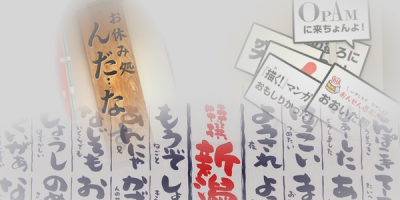
Although Sachiko reacts to Mrs. Sagara, the intensely “Tokyo” character, by becoming an “Osaka native,” Mrs. Niu is easily induced to become a “Tokyo” character. Why?
This is because Sachiko is not very good at the Tokyo dialect, whereas Mrs. Niu is. Or, we could say that because Sachiko reacts to the Tokyo dialect, she is not good at it. Because Mrs. Niu allows herself to be induced by the Tokyo dialect, she is good at it. Which is the cause and which the effect, we cannot be sure.
Let’s try to explain this with a garlic analogy. Suppose everyone is eating some garlicky food. Because everyone is eating it, no one finds it smelly. The only people who will find it smelly are those who enter the room from outside.
The Tokyo dialect is like garlic. The cultural community that uses Tokyo dialect is like the room where everyone is eating garlics—the garlic room, if you will. Nobody in this room thinks it smells of garlic.
Mrs. Sagara is right in the middle of this room. So, she does not smell the garlic. She is merely speaking and behaving as usual. However, to Sachiko, who is outside the garlic room, Mrs. Sagara’s “normal””state of being is unbearably garlicky. She cannot overcome her perception that Mrs. Sagara is flashy and indecent.
Mrs. Niu, herself an Osaka native, must have been initially disgusted by this “smell” too when she first went to live in Tokyo as a student. But now, she too is a part-time resident of the garlic room, and is almost completely acclimated to its odor. It is “normal.” She can leave and enter the garlic room at will. Thus, she has mastered the garlic, or rather Tokyo, dialect.
Osaka dialect, like the Tokyo dialect, is garlic. In fact, Mrs. Sagara asks her friend Mrs. Niu to “show her a genuine Kansai lady,” so she takes her to meet Sachiko. From Mrs. Sagara’s point of view, it’s Sachiko who dwells in the garlic room. Even today, “Osaka Experience narratives” of Tokyo natives, who make comments such as “When I went to Osaka, I saw people actually speaking in Osaka dialect,” and “It was as if everyone was doing stand-up comedy(1),” are not uncommon. However, the speech and behavior in Sachiko’s Kansai cultural community of over half a century ago must have had an even stronger smell of garlic.
Everything I have discussed here applies completely to dialects, but also applies to language as well.
Whether English, Chinese, or French, they all smell of garlic to me. Only Japanese has no smell. However, if I go abroad and get used to living in another country, should I happen to see or hear Japanese tourists there, they would seem to reek in the extreme of Japan.
To learn another language is to enter fully into that language’s “smell.” Whether or not you are induced by and can adjust to the smell until it becomes “normal” is the key to language acquisition.
* * *









(1) A number of Japan’s comedians come from the Kansai area, so the dialect has to some extent become associated with humor and comedy.